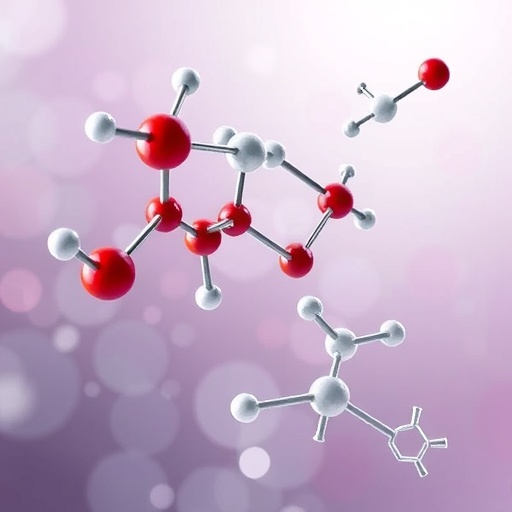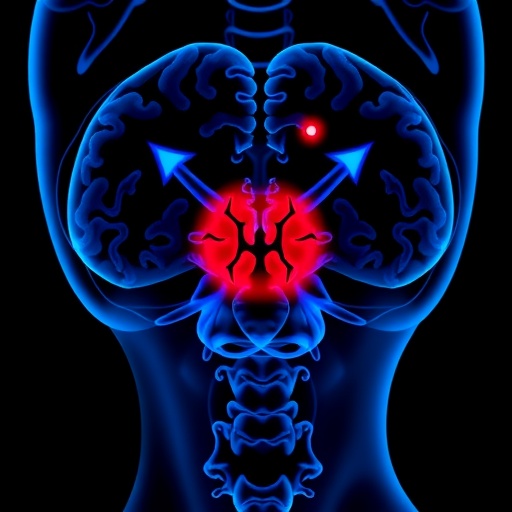In the rapidly evolving landscape of cancer therapeutics, the search for innovative molecular frameworks to enhance drug efficacy and specificity is unceasing. Recently, a compelling review has emerged focusing on the pivotal role of the acetamido group as a molecular linker in the design and development of anticancer agents. This comprehensive analysis, authored by researchers A. Shimpi and K. Juvale, published in Medical Oncology, delves into the nuanced chemical and biological characteristics that render acetamido an indispensable tool in modern drug discovery.
Acetamido, a chemical moiety characterized by its -NHCOCH3 functional group, offers a unique combination of stability and reactivity, making it a versatile linker in medicinal chemistry. The review highlights how the incorporation of this group can modulate molecular interactions with biological targets, enhancing binding affinity and selectivity. This is particularly crucial in anticancer drug design, where precision targeting can drastically reduce off-target toxicity and improve therapeutic outcomes.
The article thoroughly explores the synthetic methodologies employed in attaching the acetamido linker to various pharmacophores. It underscores advances in organic synthesis techniques that allow for precise control over the position and orientation of the acetamido group. This level of molecular precision is critical, as it influences the pharmacokinetics and pharmacodynamics of the resultant compounds, directly impacting their efficacy and safety profiles.
Biologically, the review summarizes extensive preclinical data demonstrating how acetamido-linked compounds interact with key oncogenic pathways. For instance, the presence of the acetamido group has been shown to facilitate hydrogen bonding and van der Waals interactions within the active sites of enzymes and receptors implicated in cancer progression. Such interactions contribute to the inhibition of tumor growth and metastasis, positioning acetamido as a functional group that can finely tune drug-target engagement.
Moreover, the authors discuss the role of acetamido in overcoming multidrug resistance (MDR), a formidable challenge in chemotherapy. By strategically incorporating acetamido linkers, novel compounds have exhibited enhanced cellular uptake and retention, bypassing efflux mechanisms that typically expel anticancer drugs from resistant cancer cells. This breakthrough offers promising avenues for tackling refractory cancers that are currently difficult to treat.
The review does not neglect the pharmacological aspect, providing insights into how acetamido linkers affect the metabolic stability of anticancer agents. It details enzymatic pathways that metabolize acetamido-containing drugs, and strategies to optimize metabolic resilience without compromising biological activity. This balance is essential to maximize drug half-life and reduce the frequency of dosing, thereby improving patient compliance.
Significantly, the paper highlights the application of acetamido in the design of targeted therapies, including kinase inhibitors and monoclonal antibodies. The acetamido group facilitates conjugation strategies that link cytotoxic agents with targeting moieties, creating antibody-drug conjugates (ADCs) with improved therapeutic indices. This conjugation chemistry is crucial in realizing the full potential of precision oncology.
A fascinating aspect covered is the structure-activity relationship (SAR) studies involving acetamido linkers. Shimpi and Juvale compile data showing how subtle modifications in the acetamido structure can drastically alter anticancer activity, cell permeability, and selectivity across various cancer cell lines. These findings underscore the importance of rational design guided by molecular modeling and computational chemistry.
The review also ventures into emerging trends where acetamido linkers are integrated into multifunctional nanocarriers for targeted drug delivery. By exploiting the chemical properties of acetamido, researchers have developed nanoparticles that enhance drug solubility, stability, and selective release within tumor microenvironments. This nanotechnological approach exemplifies the convergence of chemistry and materials science in cancer treatment innovation.
In the realm of clinical applications, the article presents a synthesis of ongoing and completed clinical trials testing acetamido-linked compounds. Encouraging outcomes from phase I and II trials demonstrate manageable toxicity profiles and preliminary efficacy, signaling a promising horizon for acetamido-based therapeutics entering mainstream oncology practice.
Shimpi and Juvale further reflect on the challenges and opportunities associated with the regulatory landscape for acetamido-containing anticancer agents. The review advocates for standardized analytical methods to monitor acetamido linkers during drug development and post-marketing surveillance, ensuring product consistency and patient safety.
The review’s comprehensive scope also addresses potential off-target effects and immunogenicity concerns related to acetamido linkers. By analyzing molecular immunology data, the authors propose strategies to minimize adverse immune reactions, a critical consideration for long-term therapy in cancer patients.
Importantly, the discussion extends to the environmental impact of synthesizing acetamido-based drugs. The authors call attention to green chemistry principles, emphasizing the need for sustainable synthetic routes that reduce chemical waste and energy consumption, aligning drug discovery with global ecological goals.
The culmination of this insightful review is a call to the scientific community to further explore acetamido as a modular scaffold in anticancer drug design. It encourages multidisciplinary collaborations spanning synthetic chemistry, structural biology, pharmacology, and nanotechnology to unlock new therapeutic potentials.
In summary, this article by Shimpi and Juvale is a timely and impactful contribution to oncological medicinal chemistry, articulating the multifaceted advantages of the acetamido linker in advancing the next generation of anticancer therapeutics. Through detailed chemical insights and translational implications, it sets a compelling agenda for future research and drug development endeavors.
Subject of Research: Role of acetamido as a molecular linker in the design and development of anticancer agents.
Article Title: A comprehensive review on the role of acetamido as a linker for the design and discovery of anticancer agents.
Article References:
Shimpi, A., Juvale, K. A comprehensive review on the role of acetamido as a linker for the design and discovery of anticancer agents. Med Oncol 42, 496 (2025). https://doi.org/10.1007/s12032-025-03043-2
Image Credits: AI Generated
Tags: Acetamido linkers in drug designadvances in organic synthesis for drug discoveryanticancer drug developmentbinding affinity in drug designchemical characteristics of acetamidomedicinal chemistry innovationsmolecular frameworks for cancer therapyoff-target toxicity reductionpharmacokinetics of anticancer agentsprecision targeting in cancer treatmentsynthetic methodologies in pharmaceuticalstherapeutic outcomes in cancer therapies





